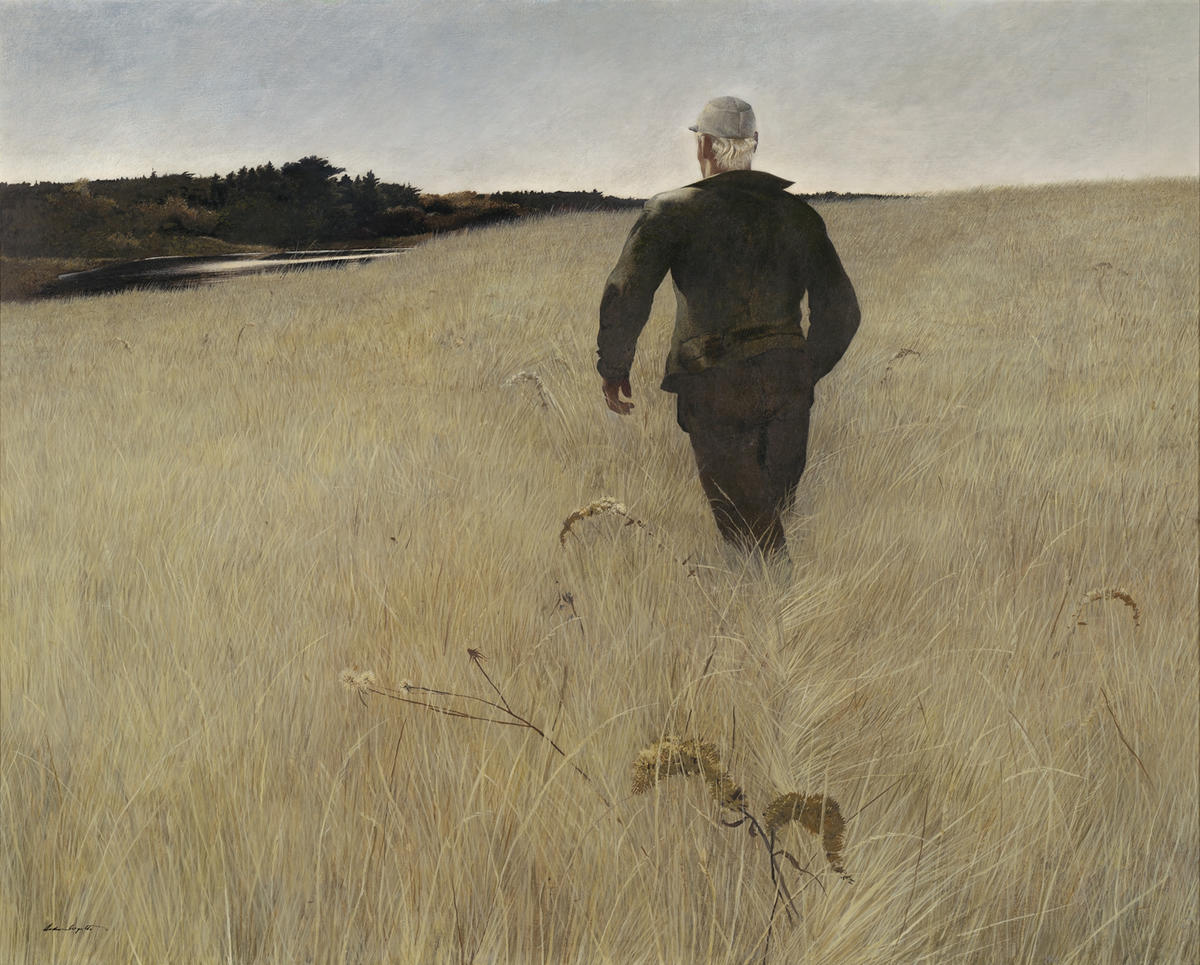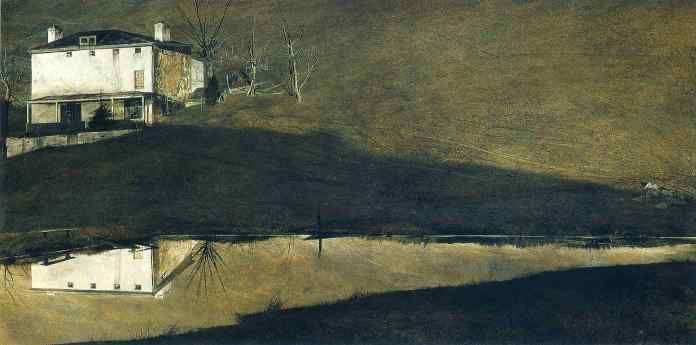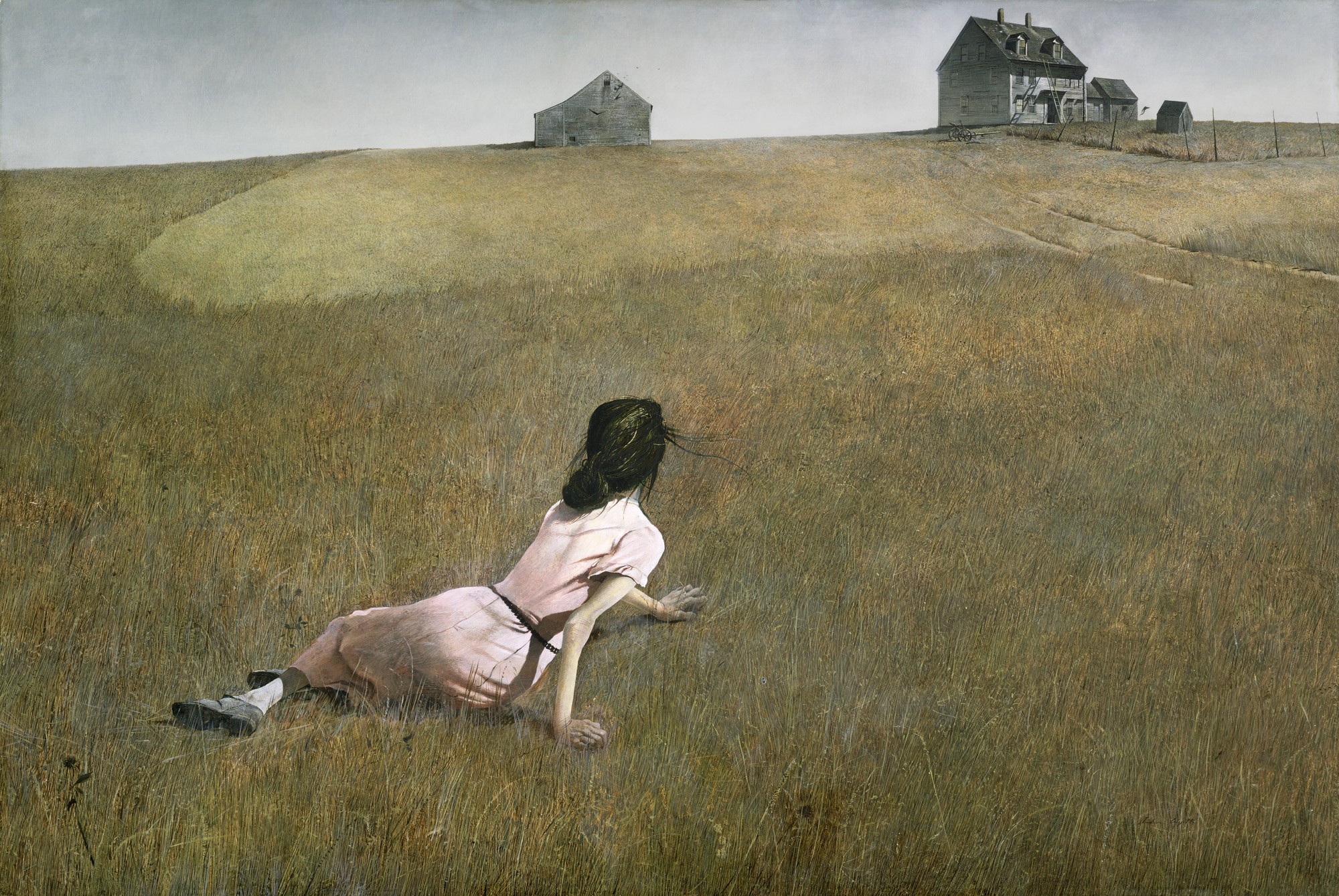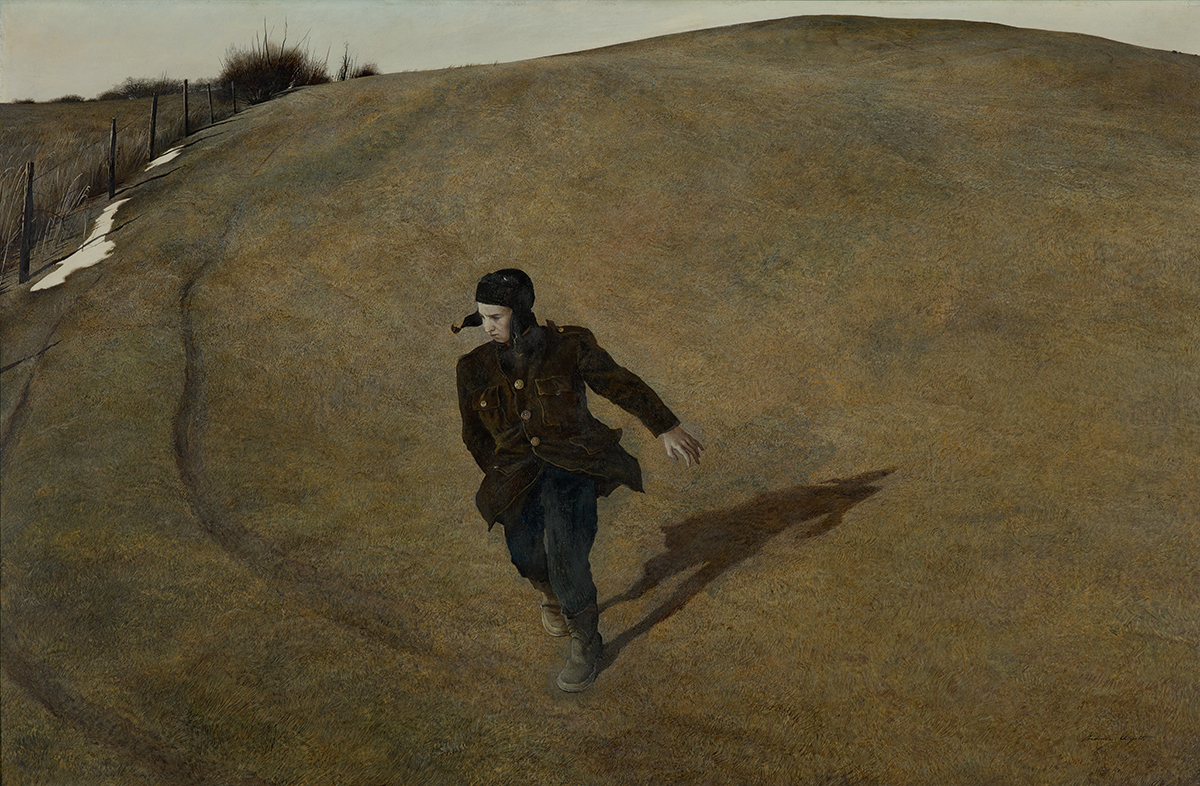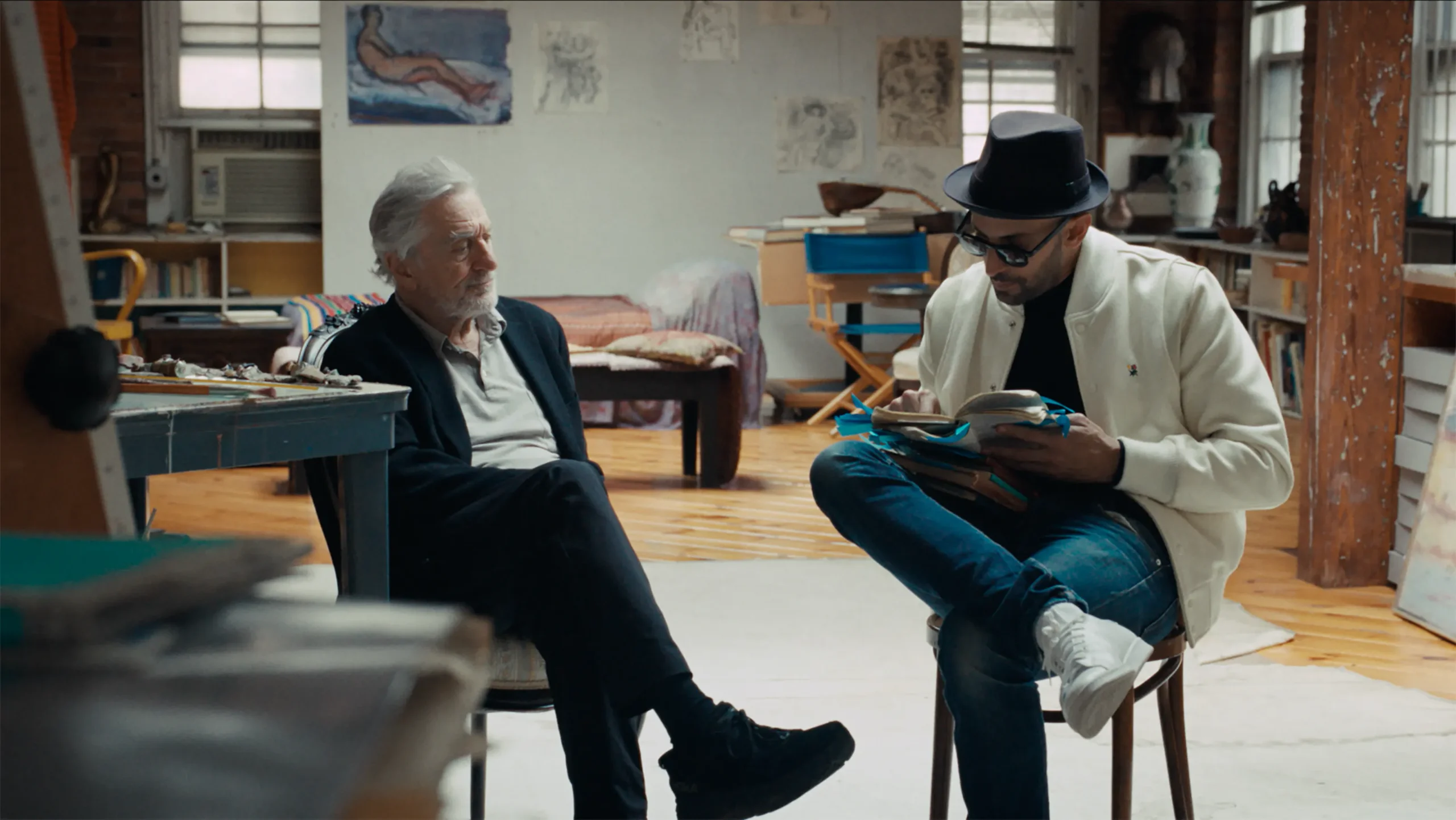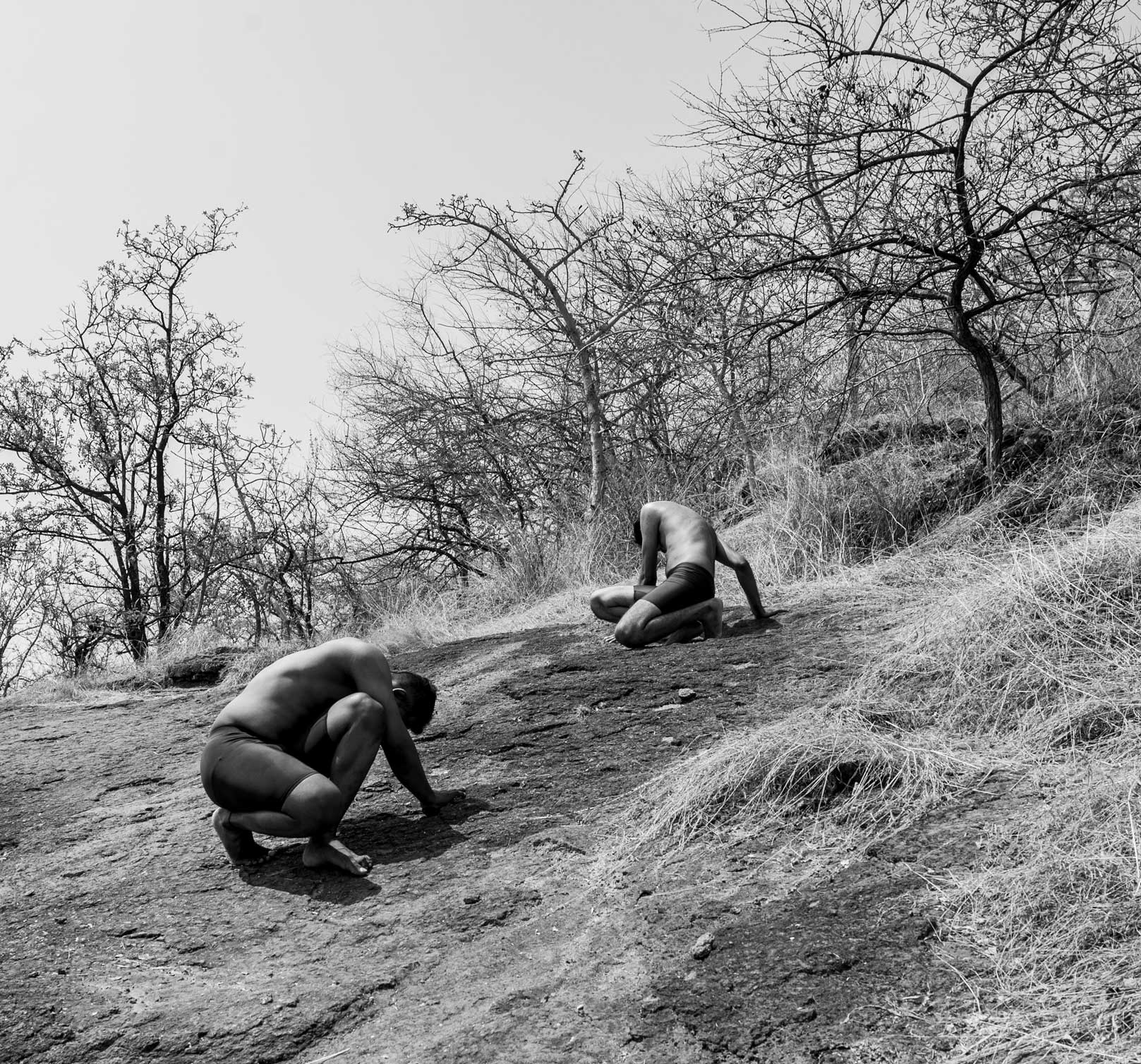It takes a very long time to get to know Andrew Wyeth as a man and even longer to know him as an artist. From he start Wyeth was free and undisciplined, in essence he had always painted for himself.
Andrew Wyeth’s works, often about vision, were inspired by his life. Not just what he, as an artist, saw the world like but this vision also worked as a narrative that helps us understand his paintings better. Looking at his work, one can argue that he was searching for a secret in nature, something profoundly real. Wyeth found in nature a basis for new American philosophy.
Contrary to other artists of the time, Wyeth was a realistic painter. His paintings were design driven from abstraction. Some of his landscapes are nothing more than just value masses; simple and yet iconic. We see details and we see distance. But when we focus on the bigger picture we can say that the abstraction with powerful structures of horizontal and vertical division make the painting more eccentric. Like in his painting, “Brown Swiss”
Brown Swiss, 1957.
The elongated reflection of the house is something that people don’t object since it is powerfully important in giving a structure to the design.
The boldness of Wyeth’s paintings sneaks up on us. The details with every single brush stroke, the loose brush work, and the layering of egg tempera medium creates a great narrative. Like in the painting, “Christina’s World” which is one of the most recognisable American painting of the 20th century. Being more realistic and dramatic as compared to the other works of that time, Christina’s World more easily resembles a dream-like story. But what is really the story here? What we can see is a woman laying in the field looking up the sloping hill to the barn at the distance.
Christina’s World, painted in 1948.
It is painted in such a way that it makes space for a constant movement and describes the three-dimensionality of the painting.
There is an asymmetrical design balance between the woman and the shapes in the top third of the canvas. These design features communicate peacefulness immediately. As we take a closer look at the painting, a few things start to work against this calm. Like the colours in Wyeth’s paintings are always subdued and muted which gives it a rather faded look. Secondly, Christina’s posture attracts a lot of attention. Her thin and contorted arms and the way her hands grip earth with a nervous energy tells us a lot more about Christina’s life. We don’t have a choice but to wonder about what might be going on in her head, facing her away from the viewer creating an absence that we’re so desperately trying to fill.
As an artist he helps us to see the importance of nature through his work. And it’s a reminder we all need. Living our everyday city life, creating a world online, it is easy to exist everyday without living at all.
Winter, 1946.
Text by Muskaan Mishra.


